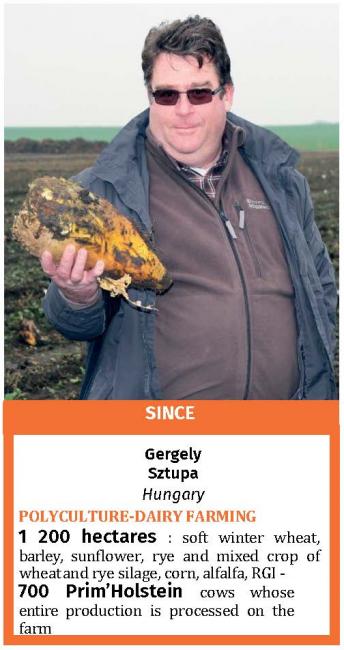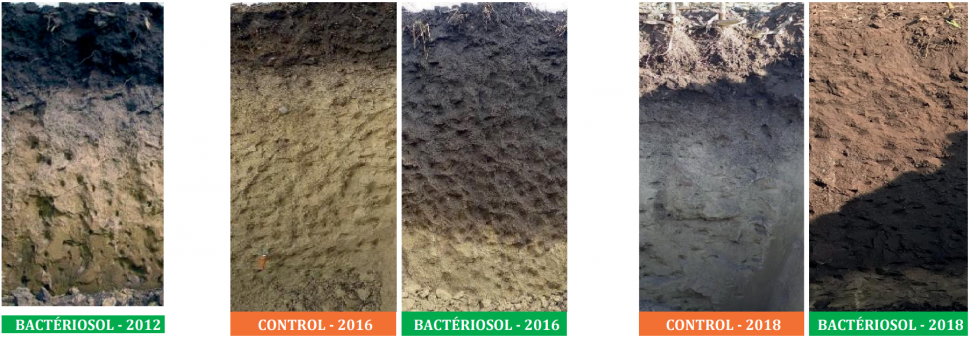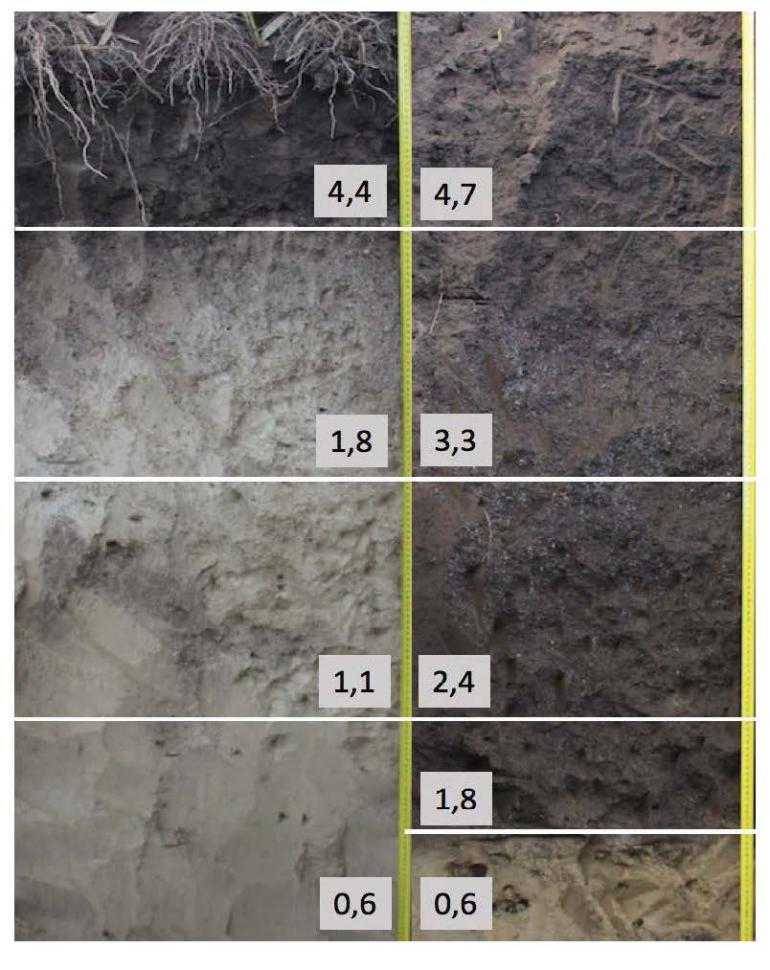
Gergely Sztupa and Gerald Dunst
Aeration, porosity, and water management by humification are doubled with SOBAC
Crop/Production
For the testimony part:
Gergely Sztupa is a breeder of Prim'Holstein and cereals in Hungary. His farm: POLYCULTURE-ÉLEVAGE, covers 1200 ha and spécialized in: soft winter wheat, barley, sunflower, rye and mixed crop of wheatand rye silage, corn, alfalfa, RGI - 700 Prim’Holstein cows whose entire production is processed on the farm
For the study result part :
Gerald Dunst, head of the agriculture and humus working group in Kaindorf, Austria.
Product/Usage
- Bactériolit
- Bactériosol concentré
Testimonial
SOIL PROFILE - PUSZTASZABOLCSI AGRAR ZRT - DAIRY POLYCULTURE FARMING - HUNGARY

Mr. Gergely Sztupa opened the doors of his farm to us for the third time since he started his adventure with BACTÉRIOSOL and BACTERIOLIT solutions in partnership with our local representatives
Sersia Farm Kft.
« The first soil profile on this farm took place in 2012, after two years of use. In 2016, we visited the same plot to see the long term evolution and we did the same in 2018. On this occasion, Sersia Farm Kft had brought together more than 140 Hungarian and Slovak farmers over 3 half days.
A little sceptical before the opening of the profile, Mr. Gergely Sztupa did not think he would see any change because the 2016 profile had already impressed him. Here is his reaction:
It was very interesting and demonstrative. The doubts I had, just vanished !
« The assessement is carried out live from 9:45 a.m. to 3 p.m. in the presence of around thirty farmers. The 2 profiles have the same soil origins with identical agronomic potential.» Their digging undoubtedly reveals a larger volume of black earth on SOBAC’s profile. All this is confirmed by the observations and measurements carried out on SOBAC side which is 1°C higher overall, a sign of higher biological fertility. The pH is completely regulated over the entire profile from 0 to 200 cm. This phenomenon highlights an homogeneous distribution of biological life, which optimizes conductivity, capillarity, and water management.
Aeration, porosity, and water management by humification are doubled ; this increases the functioning dynamics of the soil :
=> Greater bioavailability of all minerals
=> Greater autonomy compared to the use of chemical fertilizers and lower dose of mineral nitrogen
=> Substantial savings
=> Acceleration of biological fertility
In this case, the root system exploits more than 80 cm of soil, the equivalent of more than 10,000 t of soil per hectare: simply enormous!
A more powerful root system contributes to building a foliage more resistant to the attacks of cryptogamic fungi: with an economy on phytosanitary and a significant reduction of residual in the soil. In summary, SOBAC’s profile has a higher biological fertility, which has an upwardimpactonchemical andphysicalfertility. »
It was very interesting and demonstrative. Any doubts I had, just vanished !(...)
STUDY RESULTS :



Gerald Dunst, who managed this study, is Managing Director of Sonnenerde company, co-founder of CharLine company, head of the working group on agriculture and humus, part of the Kaindorf ecoregion. He is the author of the manuals «Humusaufbau» (2011) and «Kompostierung» (2015) and «Humusaufbau, Chance für Landwirtschaft und Klima» (2019). He has been involved in Terra Preta research since 2008. He built and operates the first biochar production plant in Austria.
CONCLUSION:
After 7 years of use, the SOBAC plot shows significant gains in carbon and nitrogen compared to the CONTROL:
=> + 37 % carbon i.e. + 11.7 t of C/ha/year > + 59 % nitrogen i.e. + 1. 4 t of N/ ha/year.
The «4 per 1000» initiative launched at the COP 21 in Paris in 2015 states that «an annual growth rate of the carbon stock in the soils of 0.4 %, i.e. 4 % per year, would make it possible to stop the increase in the concentration of CO2 in the atmosphere due to human activities», let’s aim higher, let’s see further !

